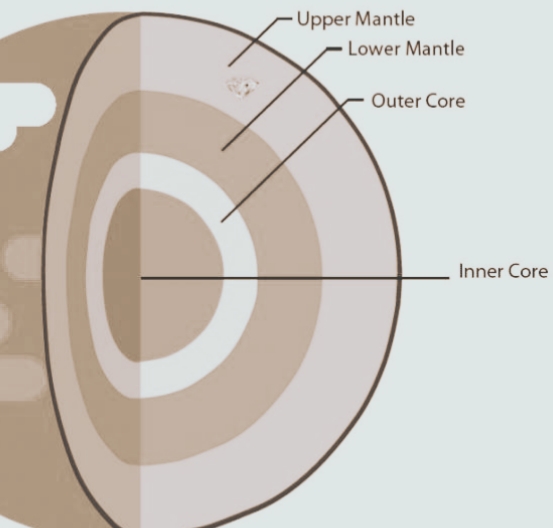In this blog article, we will discuss mantle in geology.
Table of Contents
Mantle Definition
A planetary body’s mantle is a layer that is surrounded by the crust on top and the core underneath. The largest and most substantial layer of a planetary body, mantles are often comprised of rock. Planetary bodies that have undergone density differentiation typically have mantles. Mantles are found on all terrestrial planets, many asteroids, and a few planetary moons.

Description Of Earth’s Mantle
Most interior part of the earth is made of mantle. The Earth’s thin exterior layer, the crust, and its deep, extremely hot core are separated by the mantle.
Long time ago, two key materials iron and nickel separated from other rocks and minerals when earth started to take shape around. The early mantle was the molten material that encircled the core.
Mantle cooling occurred over millions of years. “Outgassing” is the process of water contained inside minerals erupting with lava. The mantle solidified as more water was outgassed.
Properties
In terms of mechanical properties and chemical makeup, the mantle and crust diverge significantly.
Based on chemistry, rock types, rheology, and seismic characteristics, the crust and mantle are separated.
In reality, mantle melting results in the crust. Incompatible elements are thought to separate from the mantle rock as a result of partial melting of the mantle material. Less dense material is then thought to float upward through pore spaces, cracks, or fissures before cooling and freezing at the surface.
Typical mantle rocks include less silicon and aluminum than crustal rocks and have a higher magnesium to iron ratio. Experiments that partially melt rocks that are supposed to simulate the Earth’s mantle also predict this outcome.
Final Words
I tried to explain mantle in simple words. I hope you enjoyed this article.
Thanks for reading my blog post.
GoodBy!
